Researchers here have created the first electronic circuit to merge traditional inorganic semiconductors with organic "spintronics" - devices that utilize the spin of electrons to read, write and manipulate data.
Apr 13th, 2011
Read more
NanoCentral and IntertechPira are pleased to announce the programme for the 5th edition of NanoMaterials - the leading event focusing on the commercialisation of nanotechnology in Europe - featuring Lockheed Martin, Boeing, OECD, Harris + Harris and Lux Research.
Apr 13th, 2011
Read more
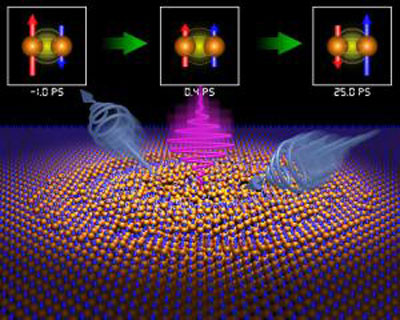 In experiments performed on the particle accelerator BESSY II of Helmholtz-Zentrum Berlin, Dutch researchers have achieved ultrafast magnetic reversal and discovered a surprising phenomenon.
In experiments performed on the particle accelerator BESSY II of Helmholtz-Zentrum Berlin, Dutch researchers have achieved ultrafast magnetic reversal and discovered a surprising phenomenon.
Apr 13th, 2011
Read more
A team of researchers from the University of Arizona and Rensselaer Polytechnic Institute have increased the toughness of ceramic composites by using graphene reinforcements that enable new fracture resistance mechanisms in the ceramic.
Apr 13th, 2011
Read more
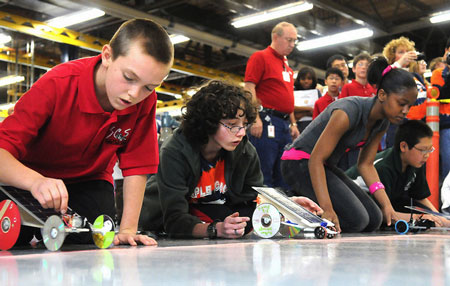 It may not be rocket science, but it's close. Fuel cells have been used to power spacecrafts for years and on Saturday, April 16, 2011, Chicago-area middle school students will use fuel cells to power model cars at equipment manufacturer Case New Holland (CNH) in Burr Ridge, Ill., as part of the Chicago Regional Science Bowl, sponsored by the U.S. Department of Energy (DOE) and Argonne National Laboratory.
It may not be rocket science, but it's close. Fuel cells have been used to power spacecrafts for years and on Saturday, April 16, 2011, Chicago-area middle school students will use fuel cells to power model cars at equipment manufacturer Case New Holland (CNH) in Burr Ridge, Ill., as part of the Chicago Regional Science Bowl, sponsored by the U.S. Department of Energy (DOE) and Argonne National Laboratory.
Apr 13th, 2011
Read more
This one-day conference and exhibition is the NanoKTN's highly successful annual showcase of new developments in nanomaterials, alongside industry end-user presentations on the challenges to be addressed within the performance engineering industries.
Apr 13th, 2011
Read more
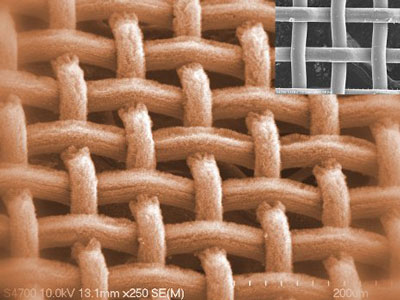 Water and oil may not mix, but, like two boxers nearing the end of the final round, they can get awfully tangled up. Now, Michigan Technological University scientists Yoke Khin Yap and Jaroslaw Drelich have created a filter that separates the two substances as quickly and cleanly as a ref breaking up a clinch.
Water and oil may not mix, but, like two boxers nearing the end of the final round, they can get awfully tangled up. Now, Michigan Technological University scientists Yoke Khin Yap and Jaroslaw Drelich have created a filter that separates the two substances as quickly and cleanly as a ref breaking up a clinch.
Apr 13th, 2011
Read more
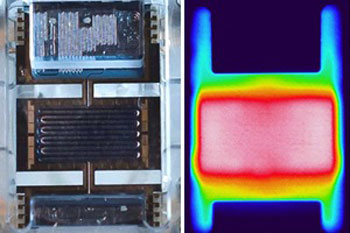 Linus Tzu-Hsiang Kao and co-workers at the A*STAR Institute of Microelectronics and the Genome Institute of Singapore have now developed a silicon-based microfluidic system that is able to sense and differentiate the H1N1 virus from other seasonal influenza strains in ultrasmall specimens.
Linus Tzu-Hsiang Kao and co-workers at the A*STAR Institute of Microelectronics and the Genome Institute of Singapore have now developed a silicon-based microfluidic system that is able to sense and differentiate the H1N1 virus from other seasonal influenza strains in ultrasmall specimens.
Apr 13th, 2011
Read more
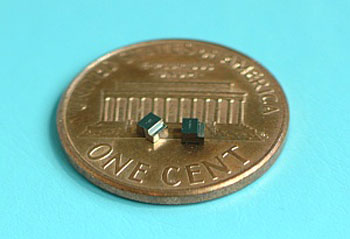 Transistors are commonly used in electronics as switches to turn an electrical current on or off. For applications that require a very large ratio between the on and off current, however, it is necessary to use mechanical 'reed' switches, in which magnetic fields physically move metallic wires (or reeds) towards and away from electrical contact points. As devices become more compact, these mechanical switches need to be miniaturized into small packages, without sacrificing performance.
Transistors are commonly used in electronics as switches to turn an electrical current on or off. For applications that require a very large ratio between the on and off current, however, it is necessary to use mechanical 'reed' switches, in which magnetic fields physically move metallic wires (or reeds) towards and away from electrical contact points. As devices become more compact, these mechanical switches need to be miniaturized into small packages, without sacrificing performance.
Apr 13th, 2011
Read more
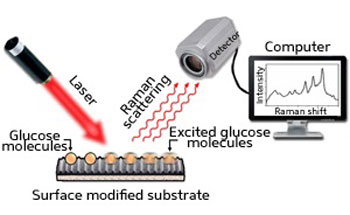 New substrates boost the sensitivity of surface-enhanced Raman spectroscopy for the detection of glucose at physiological concentrations.
New substrates boost the sensitivity of surface-enhanced Raman spectroscopy for the detection of glucose at physiological concentrations.
Apr 13th, 2011
Read more
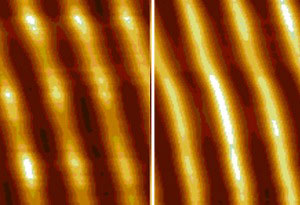 Atomic force microscopy (AFM) is a highly sensitive form of microscopy that makes it possible to map a surface with near-atomic resolution. Shaw Wei Kok and colleagues from A*STAR's Singapore Institute of Manufacturing Technology have now developed an AFM measurement method that can improve the sensitivity of the technique even further.
Atomic force microscopy (AFM) is a highly sensitive form of microscopy that makes it possible to map a surface with near-atomic resolution. Shaw Wei Kok and colleagues from A*STAR's Singapore Institute of Manufacturing Technology have now developed an AFM measurement method that can improve the sensitivity of the technique even further.
Apr 13th, 2011
Read more
Nearly 100 middle-school students from three Capital Region schools experienced the convergence of "Nanotechnology and Nature" during an educational outreach program presented by the College of Nanoscale Science and Engineering (CNSE) of the University at Albany on April 12 at the Albany Pine Bush Preserve Discovery Center.
Apr 12th, 2011
Read more
Fatih Uckun, MD, PhD, head of Translational Research in Leukemia and Lymphoma at the Children's Center for Cancer and Blood Diseases at Children's Hospital Los Angeles, and a research professor of Pediatrics at the Keck School of Medicine of the University of Southern California, has been awarded $1.7 million from the National Cancer Institute (NCI) to support development of a new strategy to overcome the resistance of cancer cells to radiation therapy.
Apr 12th, 2011
Read more
The European Commission's hesitance to define nanotechnology underscores diverging opinions among stakeholders and is causing uncertainty in the sector.
Apr 12th, 2011
Read more
An electrical engineer at the University at Buffalo, who previously demonstrated experimentally the "rainbow trapping effect" -- a phenomenon that could boost optical data storage and communications -- is now working to capture all the colors of the rainbow.
Apr 12th, 2011
Read more
Microscopically tiny ferromagnetic platelets exhibit a phenomenon which could be exploited in the future for particularly stable magnetic data storage: so-called magnetic vortex cores. Five years ago, researchers at the Max Planck Institute for Intelligent Systems found a way to reverse the magnetic field needles despite their stability using only a tiny amount of energy so that their tips pointed in the opposite direction. Such a switching process is necessary to enable the vortex cores to be used in data processing. The Stuttgart scientists have now discovered a new mechanism which makes this switching process at least 20 times faster and confines it to a far smaller region than before.
Apr 12th, 2011
Read more








 Subscribe to our Nanotechnology News feed
Subscribe to our Nanotechnology News feed